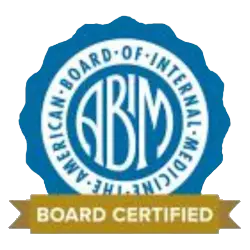Spinal Infections
The most common complaint reported in patients with spinal infection is back pain or neck pain, depending on the location of the infection. Although it is very difficult to differentiate common mechanical back pain from a spinal infection, if the patient with back pain also has a fever, further investigation is warranted to rule out the possibility of a spinal infection. That being said it is also important to realize that approximately 50% of patients with a spinal infection may not have a fever, and approximately 70% of patients will not have any neurologic symptoms and/or neurologic findings on physical examination.
Some examples of spinal infections include: spinal epidural abscess, spondylodiscitis (infection of the disk space and vertebra) and facet joint septic arthritis. Spinal surgery with instrumentation has become an integral component in the management of a variety of spinal pathologies. The postoperative infection rate varies from as low as 2% to as high as 20%. Postoperative spinal implant infections (SII) are associated with longer length of stay in the hospital, worse outcomes overall including higher rates of repeat trips to the operating room for additional surgery, an increased risk of death and (not surprisingly) lower rates of patient satisfaction. Risk factors have been identified for SII, including smoking, diabetes, advanced age, malnutrition, obesity, steroid use, and leaving postoperative drains in for a longer duration.
Diagnostic Considerations:
Spinal infections pose a demanding diagnostic and treatment problem for which a multidisciplinary approach, including spine surgeons, radiologists and infectious diseases specialists is required. Diagnosis starts with a complete history and physical examination, and should include laboratory and microbiologic diagnostics in addition to imaging studies, usually including an MRI. Every effort should be made to establish a specific microbiologic diagnosis, as the causes of the infection vary, and are not always even due to bacteria.
Therapy:
Treatment options vary depending on the organism, anatomic site of infection and severity of illness of the patient. Oftentimes successful therapy requires a combination medical and surgical approach. Typical indications for surgical therapy include sepsis, progressive neurologic dysfunction, spinal instability, epidural abscess, and failure of conservative (nonsurgical) management.
Conclusion:
Diagnosis and management of patients with spinal infections is challenging and often complex, and patients are at risk for significant complications as a result of these infections. A Spinal Infection Medical Expert Witness may be helpful in the evaluation of the care of a patient with a spinal infection.
1.Tsantes et al. Microorganisms 2020. 8: 476
2.Kalfas et al. Asian J. Neurosurgery 2019. 14:1181
3. Rao et al. Clinical Infectious Diseases 2011. 53: 686



